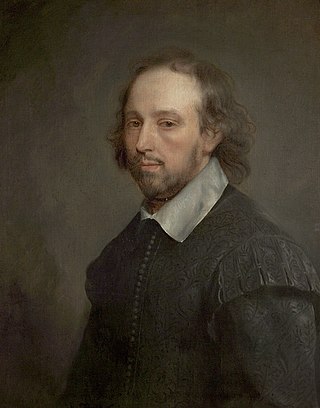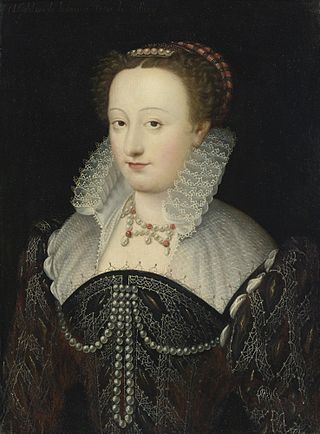
Poetry, also called verse, is a form of literature that uses aesthetic and often rhythmic qualities of language − such as phonaesthetics, sound symbolism, and metre − to evoke meanings in addition to, or in place of, a prosaic ostensible meaning. A poem is a literary composition, written by a poet, using this principle.

A sonnet is a poetic form that originated in the poetry composed at the Court of the Holy Roman Emperor Frederick II in the Sicilian city of Palermo. The 13th-century poet and notary Giacomo da Lentini is credited with the sonnet's invention, and the Sicilian School of poets who surrounded him then spread the form to the mainland. The earliest sonnets, however, no longer survive in the original Sicilian language, but only after being translated into Tuscan dialect.

Sir Thomas Wyatt was a 16th-century English politician, ambassador, and lyric poet credited with introducing the sonnet to English literature. He was born at Allington Castle near Maidstone in Kent, though the family was originally from Yorkshire. His family adopted the Lancastrian side in the Wars of the Roses. His mother was Anne Skinner, and his father Henry, who had earlier been imprisoned and tortured by Richard III, had been a Privy Councillor of Henry VII and remained a trusted adviser when Henry VIII ascended the throne in 1509.
La Pléiade was a group of 16th-century French Renaissance poets whose principal members were Pierre de Ronsard, Joachim du Bellay and Jean-Antoine de Baïf. The name was a reference to another literary group, the original Alexandrian Pleiad of seven Alexandrian poets and tragedians, corresponding to the seven stars of the Pleiades star cluster.
An extended metaphor, also known as a conceit or sustained metaphor, is the use of a single metaphor or analogy at length in a work of literature. It differs from a mere metaphor in its length, and in having more than one single point of contact between the object described and the comparison used to describe it. These implications are repeatedly emphasized, discovered, rediscovered, and progressed in new ways.

Elizabethan literature refers to bodies of work produced during the reign of Queen Elizabeth I (1558–1603), and is one of the most splendid ages of English literature. In addition to drama and the theatre, it saw a flowering of poetry, with new forms like the sonnet, the Spenserian stanza, and dramatic blank verse, as well as prose, including historical chronicles, pamphlets, and the first English novels. Major writers include William Shakespeare, Edmund Spenser, Christopher Marlowe, Richard Hooker, Ben Jonson, Philip Sidney and Thomas Kyd.

Sonnet 130 is a sonnet by William Shakespeare, published in 1609 as one of his 154 sonnets. It mocks the conventions of the showy and flowery courtly sonnets in its realistic portrayal of his mistress.

Il Canzoniere, also known as the Rime Sparse, but originally titled Rerum vulgarium fragmenta, is a collection of poems by the Italian humanist, poet, and writer Petrarch.

Amoretti is a sonnet cycle written by Edmund Spenser in the 16th century. The cycle describes his courtship and eventual marriage to Elizabeth Boyle.

Sonnet 141 is the informal name given to the 141st of William Shakespeare's 154 sonnets. The theme of the sonnet is the discrepancy between the poet's physical senses and wits (intellect) on the one hand and his heart on the other. The "five wits" that are mentioned refer to the mental faculties of common sense, imagination, fantasy, instinct, and memory. The sonnet is one of several in which the poet's heart is infatuated despite what his eyes can see.

The sonnets of Petrarch and Shakespeare represent, in the history of this major poetic form, the two most significant developments in terms of technical consolidation—by renovating the inherited material—and artistic expressiveness—by covering a wide range of subjects in an equally wide range of tones. Both writers cemented the sonnet's enduring appeal by demonstrating its flexibility and lyrical potency through the exceptional quality of their poems.

Sonnet 127 of Shakespeare's sonnets (1609) is the first of the Dark Lady sequence, called so because the poems make it clear that the speaker's mistress has black hair and eyes and dark skin. In this poem the speaker finds himself attracted to a woman who is not beautiful in the conventional sense, and explains it by declaring that because of cosmetics one can no longer discern between true and false beauties, so that the true beauties have been denigrated and out of favour.

Sonnet 78 is one of 154 sonnets published by the English playwright and poet William Shakespeare in 1609. It is one of the Fair Youth sequence, and the first of the mini-sequence known as the Rival Poet sonnets, thought to be composed some time from 1598 to 1600.
"Elegy XIX: To His Mistress Going to Bed", originally spelled "To His Mistris Going to Bed", is a poem written by the metaphysical poet John Donne.
Waṣf is an ancient style of Arabic poetry, which can be characterised as descriptive verse. The concept of waṣf was also borrowed into Persian, which developed its own rich poetic tradition in this mode.
This page lists the armoury of the communes in la Manche.

Madeleine de l'Aubespine was a French aristocrat, lady in waiting to Catherine de Medicis, poet, and literary patron. She was one of the only female poets praised by "the prince of poets," Pierre de Ronsard and she was one of the earliest female erotic poets.
"They flee from me" is a poem written by Thomas Wyatt. It is written in rhyme royal and was included in Arthur Quiller-Couch's edition of the Oxford Book of English Verse. The poem has been described as possibly autobiographical, and referring to any one of Wyatt's affairs with high-born women of the court of Henry VIII, perhaps with Anne Boleyn.

Walatta Petros was an Ethiopian saint. Her hagiography, The Life-Struggles of Walatta Petros was written in 1672. She is known for resisting conversion to Roman Catholicism, forming many religious communities, and performing miracles for those seeking asylum from kings.

Elegiac Sonnets, titled Elegiac Sonnets, and Other Essays by Charlotte Sussman of Bignor Park, in Sussex in its first edition, is a collection of poetry written by Charlotte Smith, first published in 1784. It was widely popular and frequently reprinted, with Smith adding more poems over time. Elegiac Sonnets is credited with re-popularizing the sonnet form in the eighteenth century. It is notable for its poetic representations of personal emotion, which made it an important early text in the Romantic literary movement.













